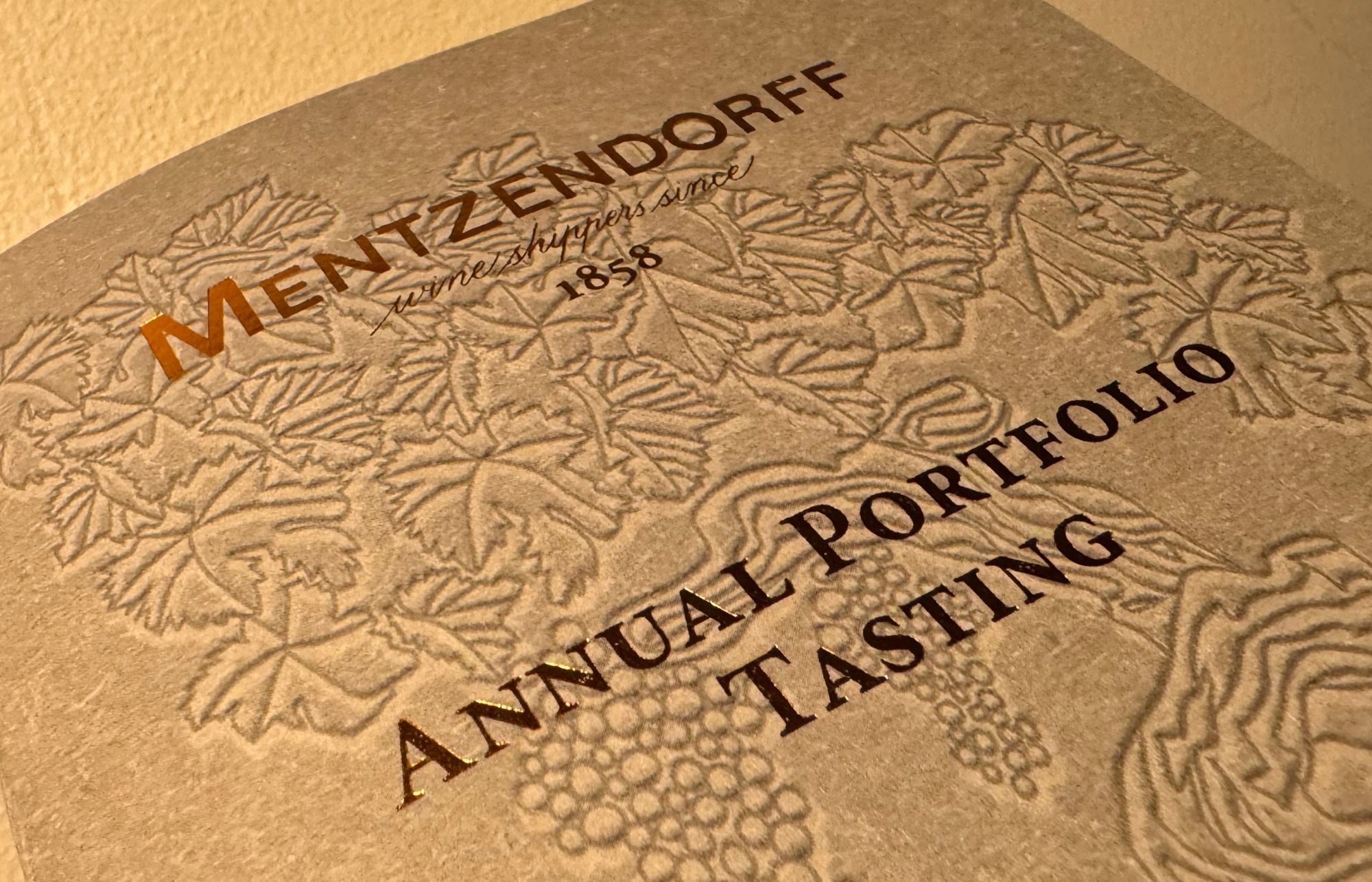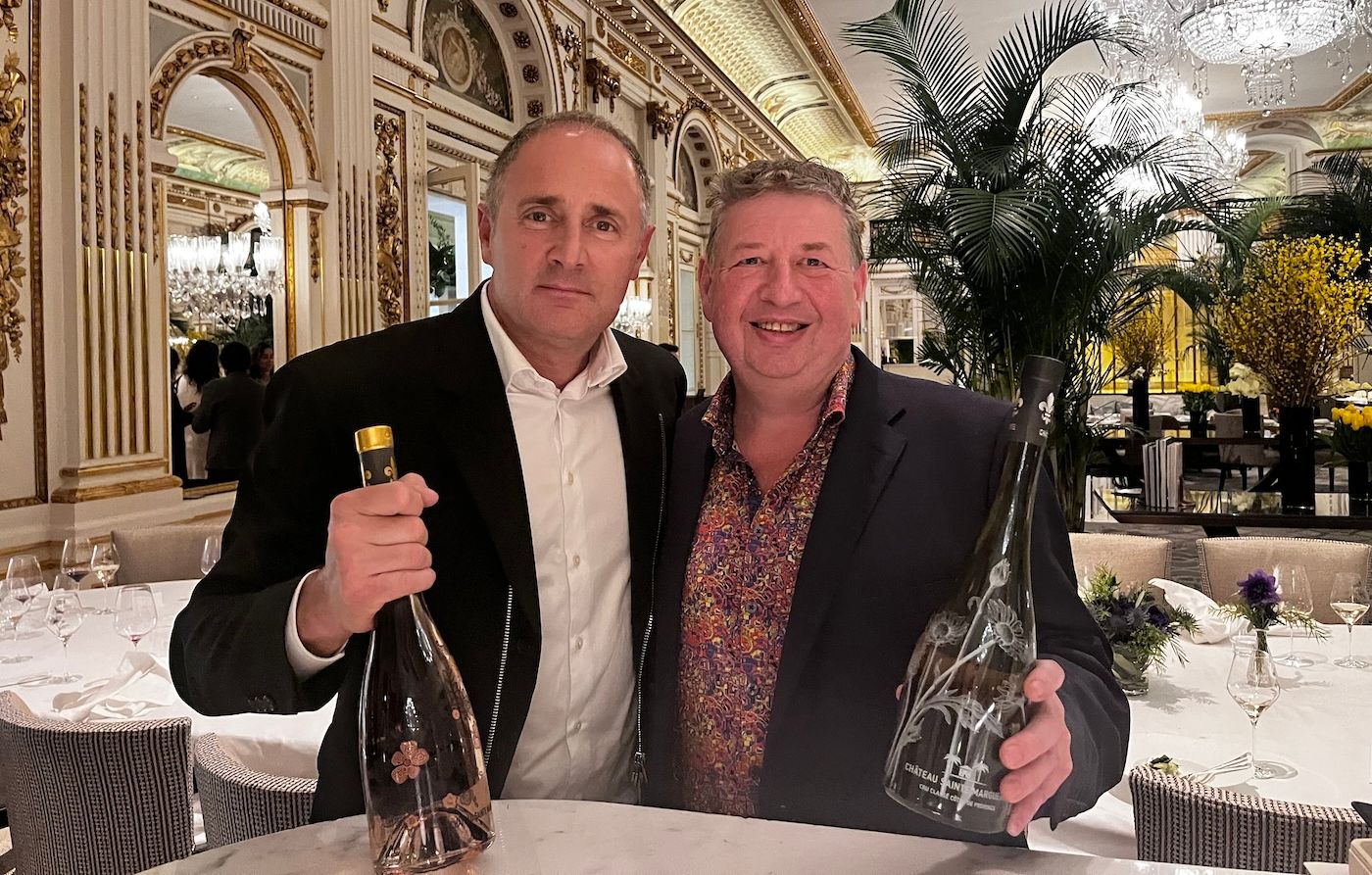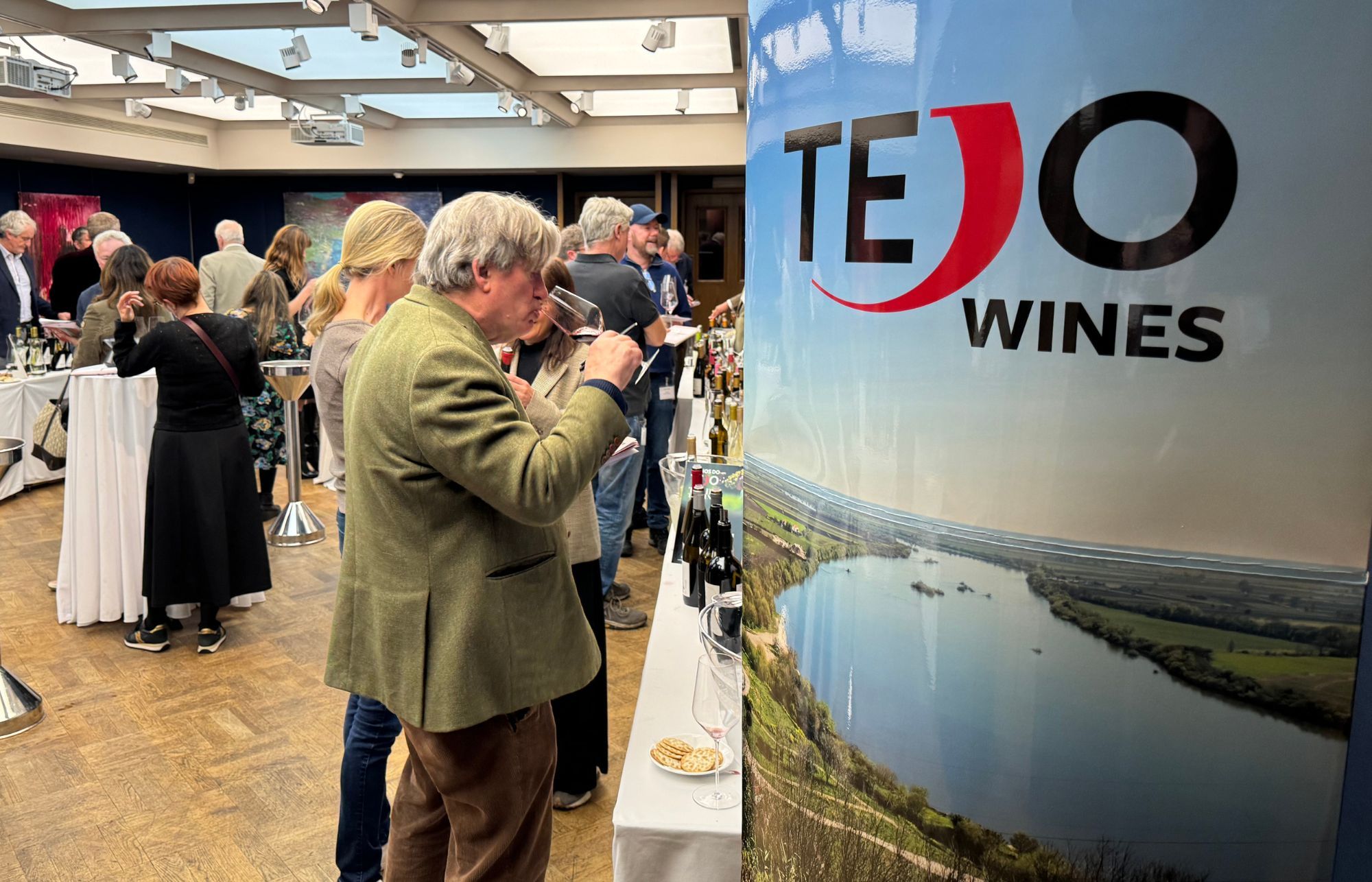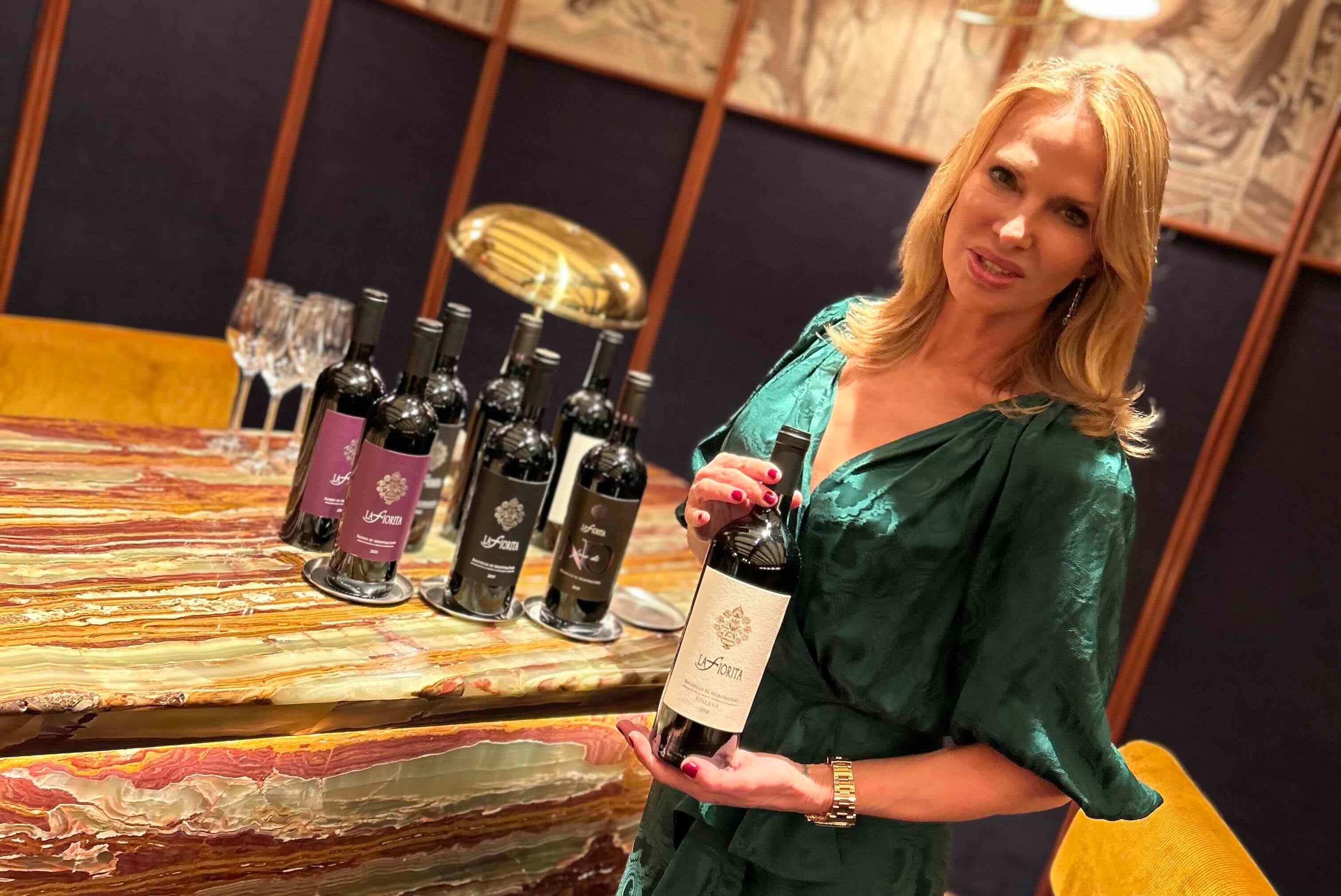After in-depth masterclasses from Bollinger, Langlois and Fladgate, with its new range of still Portuguese wines, Turner takes his pick from the rest of the Mentzendorff portfolio
When you head off to the Mentzendorff portfolio tasting, you’re aware you’re in for a treat. You could stay at the Bollinger table all morning, get very little work done, but have a fabulous time tasting world class sparkling wines. You could spend the afternoon sipping on the glittering array of sumptuous ports from the Taylors library, again getting very little work done. But you’re also aware you’d miss out on the rest of the 40 top producers with corks popped and bottles open, as well as some great masterclasses along the way.
Bollinger continues to master Pinot Noir

Denis Bunner and Bollinger PN, Mentzendorff tasting, February 28, 2024
The first masterclass of the day showcased Bollinger’s unique vision of Pinot Noir, as chef de caves Denis Bunner introduced a vertical tasting of Bollinger PN.
“Pinot Noir has always been of huge importance to Bollinger,” stated Bunner. “We’ve created special edition vintage Pinot Noirs in the past, but we wanted to add something new to the portfolio with a 100% Pinot Noir, non-vintage blend.”
Bunner, who started at Bollinger in 2013, was part of the winemaking team given free reign by the newly appointed cellar master Gilles Descôtes.
“We were each asked to look at the six pillars of our wines – namely wood, steel, vintage, reserve wines, ageing, and terroir – and come up with a blend worthy of the Bollinger portfolio,” remembered Bunner. “Of course, Gilles’ blend was the best! He used Pinot Noir from vineyards in Äy and Bouzy, each with a minimum rating of Premier Cru, with the aim to show the magnificent terroir whilst magnifying the Pinot Noir itself.”
The masterclass allowed the chance to try the PNVZ15 and PNVZ16, both with majority fruit from Grand Cru plots in Verzenay.
“As we don’t use Chardonnay in the blend, we need freshness from another angle,” noted Bunner. “Verzenay fruit gives us that freshness we need.” The use of 20-25% reserve wine (from magnums) helps to smooth out any vintage ‘wrinkles’, but allowed room for distinct differences and unique wines from each release. The rich and creamy PNVZ15 was a fabulous gastro wine, whilst the fresh and precise PNVZ16 was the perfect apéro.
The difficult 2017 vintage saw the chalk-dominated soils of Tauxières take precedence in the PNTX17. The same year Bollinger set to work on detailed terroir studies of its plots, the so-called ‘Burgundy Approach’, the heatwaves and rain before harvest making for some tough harvesting decisions. The late harvest Tauxières plots kept the freshness as well as a ‘milky chalkiness’ and ripe red fruits.
The Bollinger town of Äy finally won out in 2018 with the Champagne Bollinger PNAYC18 (RRP £99.00), with the richer, creamier style of Champagne the house is so well known for. Using reserve wines from 2016 and 2017 in tanks, and 2009 in magnums, this was my pick of the tasting with a subtle umami mouthfeel with overtones of strawberries, pink grapefruits, red apples, salinity, and orange blossom. Should age beautifully too.
Langlois rebrand hits the mark
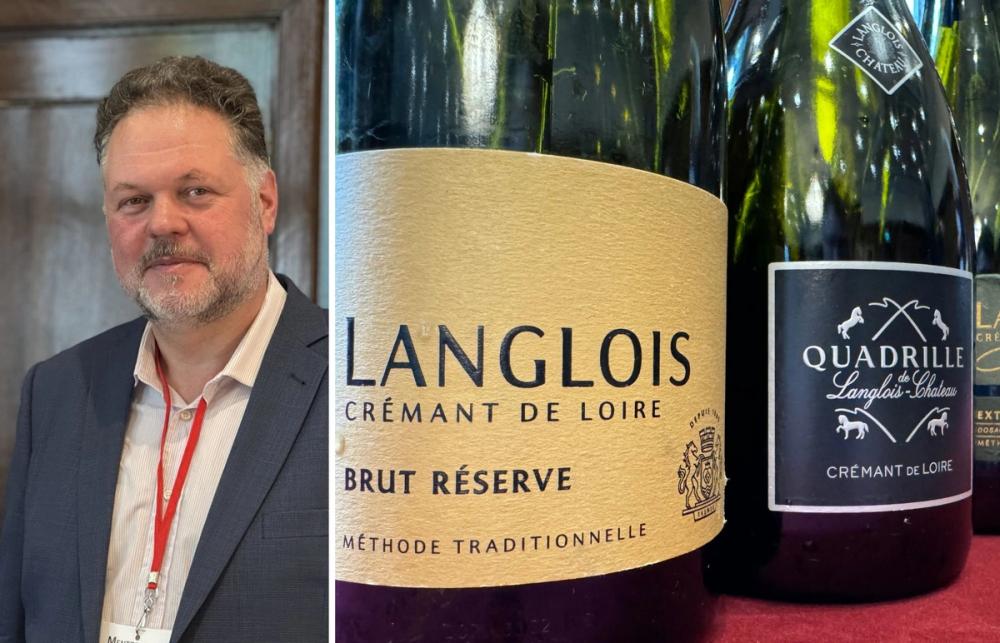
François-Régis de Fougeroux and Langlois
The next masterclass of the day focused on the rebrand of Langlois in the Loire Valley. Also part of the Bollinger Family, all Crémants and Saumur wines produced will now fall under the Langlois, whilst the Sancerre wines are now under the Hubert Brochard label. François-Régis de Fougeroux, director of Langlois, was present on the day to present the new branding of Langlois and explore the joys of Chenin Blanc in the Loire Valley.
It is unquestionably the Crémant de Loire range where Langlois really hits the peaks. “Champagne is for special occasions,” noted de Fougeroux, “but Crémant turns the ordinary into special occasions!” The immaculately produced marketing video showcasing the vineyards, river, climate and architecture of the Loire is as much a part of the rebrand as the decorative new labels.
The Langlois Crémant de Loire Brut Reserve NV (RRP £19.00) is aged for a minimum of 24 months, over twice the regulated minimum, and it shows in the plush, concentrated, but ultimately fresh wine, with peaches, apples, lemons, quince, peach blossom, and savoury waxiness on the palate into a long, lifting, acidity-driven finish. But continuing on the theme of excellent value for money, the top end Langlois Cadence Extra Brut, Crémant de Loire 2017 (RRP £34.00) stole the show with complex nut, dried fruit, brioche notes from five years on the lees, and revealing expressive red apples, peaches, honey, cashew nut and toast as the wine wakes up in the glass. Excellent balance, rich, round, honey, jasmine, and brioche finish. Simply delicious.
Fladgate shows off its new acquisitions
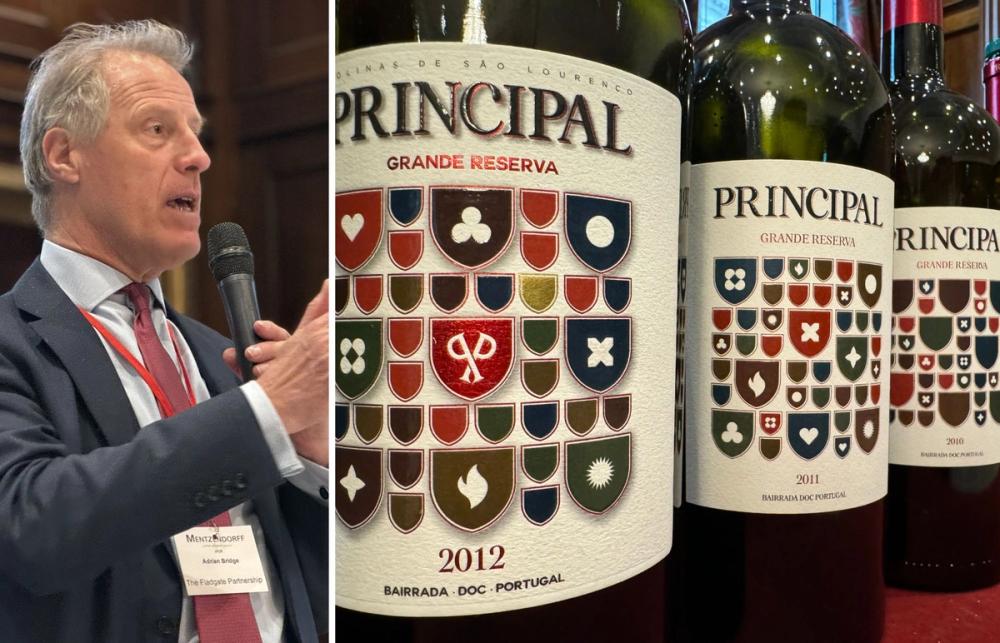
Adrian Bridge and Principal
The last masterclass of the day was introducing the new Fladgate Still & Sparkling Wines, created in September 2023 after the purchase of IdealDrinks by The Fladgate Partnership. The wines were designed from inception to showcase just how good Portuguese still and sparkling wines could be, with fruit sourced from the finest historical vineyards of Vinho Verde DOC, Dão DOC and Bairrada.
The masterclass itself was a vintage vertical of the Grande Reservas of Principal, one of Portugal’s iconic wines. Hosted by Fladgate CEO, Adrian Bridge, he was keen to stress the importance of moving to other areas of Portugal for this expansion.
“At Fladgate we were using all our Douro grapes on our speciality ports,” stated Bridge. “If we were going to venture into still wines, we needed to be sure of the quality match with our existing portfolio.”
Fladgate will add expertise in the winery, in logistics and in a wide-reaching export market, helping these wonderful Portuguese wines see more wine shelves and lists in the years to come.
Renowned Bordelaise oenologist Pascal Chatonnet, who consults on the property, was on hand to take us through the vintages on show of Principal. “People ask me if it’s possible to make a great Portuguese wine,” reflected Chatonnet, “but it’s nearly impossible to define what a Portuguese wine is.”
In line with Bridge’s assertion of high-quality wines, Principal is the iconic label of the flagship winery of Colinas De São Lourenço, in the heart of Bairrada’s limestone fault. The vineyards produces nine different varieties, but is dominated by Touriga Nacional, Cabernet Sauvignon, Cabernet Franc and Merlot, the grapes that make up Principal.
“We get about 1000mm of rain a year, limestone and marl soils, 2500 sunshine hours,” revealed Chatonnet, “you can appreciate why the Bordeaux varieties do so well!”
Our vertical tasting of vintages between 2008 and 2016 were, of course, reflective of vintage changes. The hotter 2012 vintage showed riper, drier fruits and warmth than the deeply concentrated and complex 2016, but the clear stylistic change occurred with a winemaker change between 2010 and 2012.
The 2008-2011 wines were clearly more extracted, ‘Parkerised’ wines, but truly excellent if that is your preference. From 2012 onwards, however, there is a drop in extraction, a prominence of fruit and, for me at least, a much more elegant balance throughout. The current vintage available is the Principal Grande Reserva 2012 (RRP £99.00) which was my pick of all eight vintages tasted. Deep red fruits, dried cherries, liquorice, nutmeg, game, cedar, superbly judged oak and acidic balance, with a pleasant warmth and sweet dried fruit to the finish.
Other wines worth seeking out
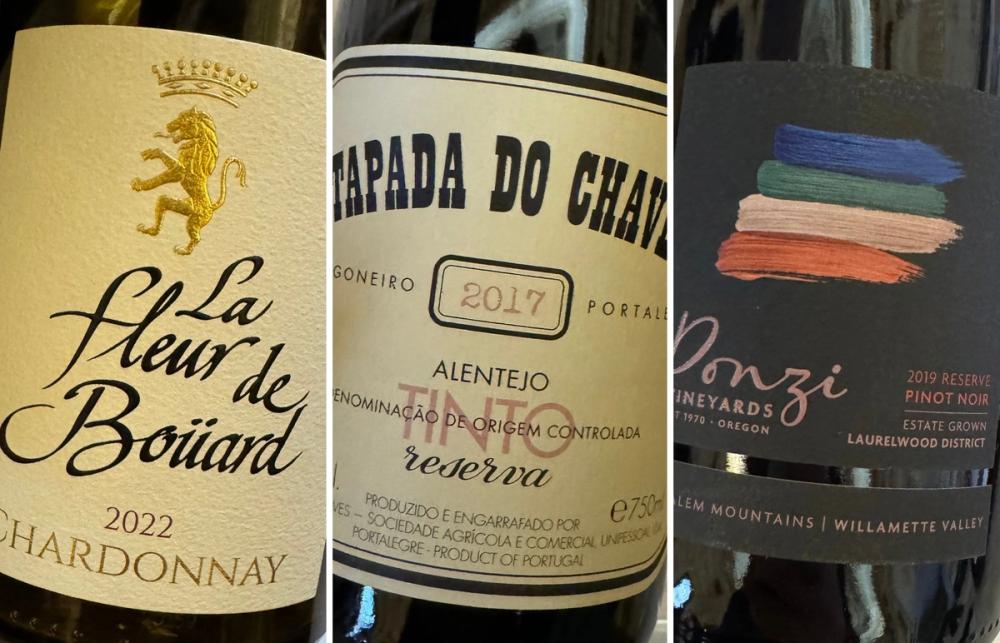
Outside of the masterclasses, the main tasting took place in the very grandiose ballroom on the second floor. Filled with the great and the good of Mentzendorff’s producers, clients and staff, the 35 tables contained a host of high-class wines, fortifieds and spirits from across the globe. I managed to get around (most of) the room and picked out some favourites to have a look at.
Château La Fleur de Boüard, from Lalande de Pomerol, is the family project of Hubert de Boüard, co-owner and winemaker at Château Angélus in Saint Émilion. From their reds, the classic, Merlot-dominated Château La Fleur de Boüard was shown in three available vintages (with the slightly cheaper 2014 showing very well right now at RRP £35) and the Le Plus de la Fleur Boüard 2011 utterly resplendent in plush concentration for those with clients willing to part with a cool £100 per bottle. But, and I’m aware my colleagues at the CIVB might throw something hard and heavy at me for this, the real winner on the table was the La Fleur de Boüard Chardonnay 2022 (RRP £29.00). Clean, crisp stone and citrus fruit, subtle creaminess on the palate and a grippy, fresh saline finish.
Tapada do Chaves from Alentejo was bought in 2017 by the Eugénio de Almeida Foundation. This philanthropic venture promotes the art and culture in and around Portalegre, whilst ensuring all profits go back into the local area, including museums, palaces and educational scholarships for local children. The plan in purchasing Tapada do Chaves was to revitalize the famed wines of an iconic local estate. The Vinhas Velhas Branco 2019 (DPD £52.00) was pretty special, but I thought the wine that ticked all my boxes, including great value, was the Tapada do Chaves DOC Reserva Tinto 2017(DPD £32.00). A beautiful colour from a splash of Alicante Bouschet in the blend with Aragonez and Trincadeira, it was ripe and fresh fruit bomb of red, blue and black fruits, but with subtle hints of smoke, vanilla and black pepper giving it a lift and complexity.
Ponzi Vineyards in Willamette Valley, Oregon, was established in 1970 and was among the first wineries to put the Willamette Valley on the map, from its base in the Laurelwood District AVA. In 2021, Ponzi was acquired by The Bollinger Group, and this year marks their first outing on Mentzendorff’s portfolio. The line-up includes the very worthy Ponzi Tavola Pinot Noir as an entry point, with a Pinot and a Chardonnay as the main estate wines. Rather surprisingly for me, however, I thought its top end Ponzi Reserve Pinot Noir 2019 (RRP £65.00) was the stand-out on the table. Although 50% more expensive than the estate labels, I genuinely thought this was easily worth the premium, with excellent complexity and sharp, distinct notes of smoke, red plums, strawberries, raspberries, cinnamon and nutmeg all beautifully balanced with fresh acidity into the long finish.
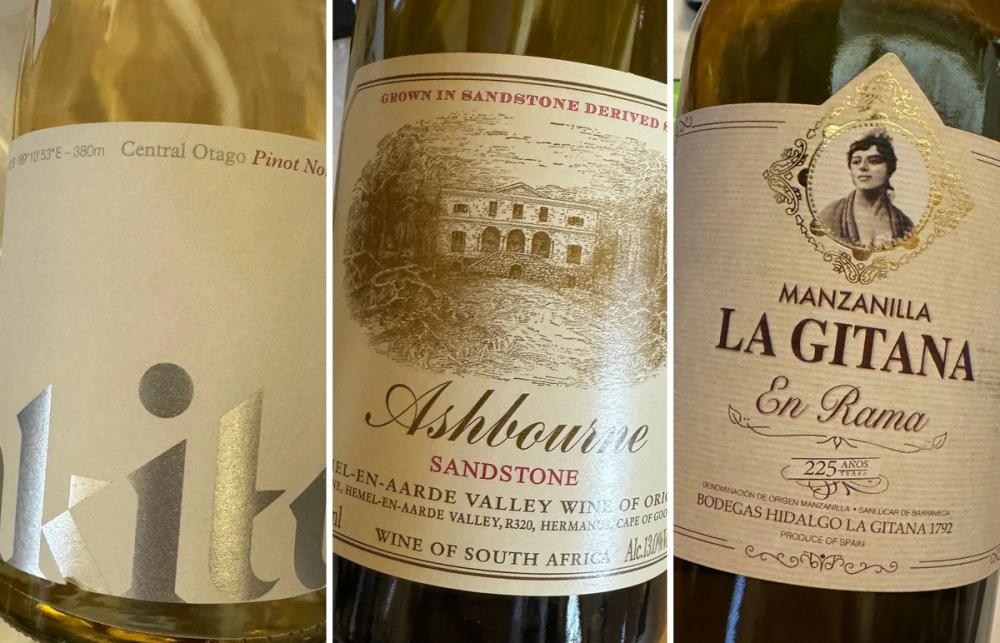
Akitu is based in the heart of Central Otago’s Upper Clutha basin, just minutes from Lake Wanaka. Founded in 2001 by Andrew Donaldson, a native to Central Otago and renowned Pinot Noir specialist, the vineyard is entirely dedicated to New Zealand’s most popular red grape. Both A1 (deeper, richer, riper) and A2 (fresher, fruitier) are classic Central Otago Pinots, but my pick from its line-up was the vibrant Akitu Pinot Noir Blanc 2022 (RRP £33.00). Made only from the free-run juice of the berries, the nose is very pretty indeed with fresh red apples, cranberries, lingonberries and orange blossom and a grippy, mineral and white pepper finish. Definitely one for the sommeliers here.
One of Mentzendorff’s prized producers is Hamilton Russell, who helped put Hemel-En-Aarde on the map and changed the face of Pinot Noir in South Africa. Just down the road from there, to the eastern edge of the Hamilton Russell Vineyards is his Ashbourne project, a vineyard established in 1996 to see how far they could push the premium stamp of Pinotage in this part of South Africa. But the wine that made me take note, and possibly took the prize for best value wine of the day, was the Ashbourne Sandstone 2023 (DPD £19.00), a white blend of 67% Sauvignon Blanc, 22% Chardonnay and 11% Semillon. The Sauvignon Blanc is fermented in a mixture of terracotta amphorae (a first in South Africa I was told) and ceramic egg. There was an underlying fruit, but the biggest feeling was the tangy, grippy, saline minerality with great acidic freshness and mouth-coating structure.
I’m finishing off with one of the countless quality fortified wines available from Mentzendorff. Bodegas Hidalgo holds a special place in my heart, following a memorable wine dinner at Planet of the Grapes many moons ago that revealed the joy of sherry to me! Of the wines on show, the new release of La Gitana ‘En Rama’ Manzanilla (DPD £21.50) was a gorgeous drop, with those lovely salty nuts, lemons and bruised apples as well as a juicy creamy texture and fabulous length. I love the En Rama style and this is one of the best out there.
Mentzendorff is a commercial partner of The Buyer. To discover more about it click here.
Mike Turner is a freelance writer, presenter, educator, judge and regular contributor for The Buyer.
